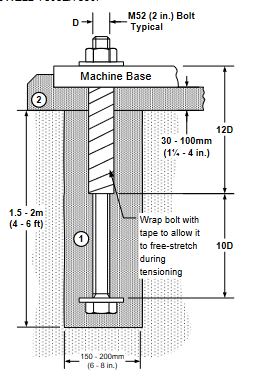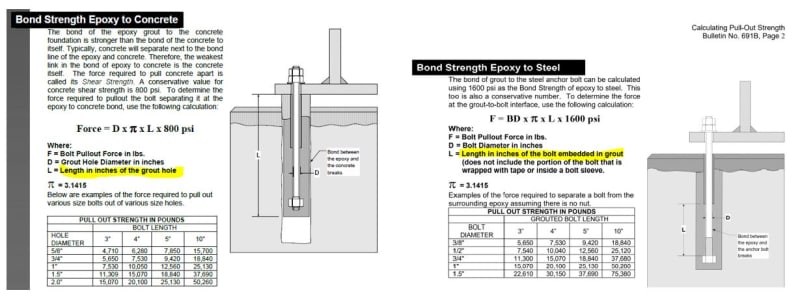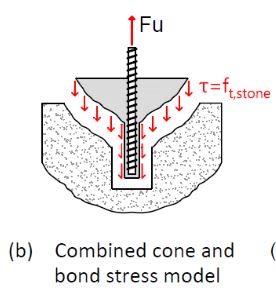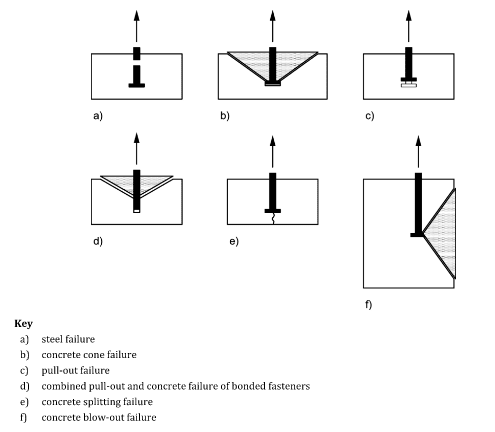BridgeEngineer21
Structural
- Oct 26, 2021
- 58
I am reviewing a proposed connection for a tower foundation that has the detail shown in the sketch below. The contractor wants to use corrosion protection tape at the top portion of the anchor bolt. They did not provide any info on the tape, and from the manufacturer's website I can see it is mainly geared towards wrapping pipes and things like that so they don't give any structural properties or friction coefficient for it.
Therefore, I believe the length of the anchor bolt covered in this tape should be assumed to be completely debonded from grout. This means that for anchor bond strength, only the length ld,effective should be counted on.
Now my question is, what about for other checks such as pullout, breakout, or pryout? Intuitively, it seems those are all based on the depth of concrete (or in this case, grout and rock) above the bottom of your anchor, and there's no need to discount the debonded portion of the anchor. But I've never dealt with a case like this before, and would like to get a little confidence with some second opinions.
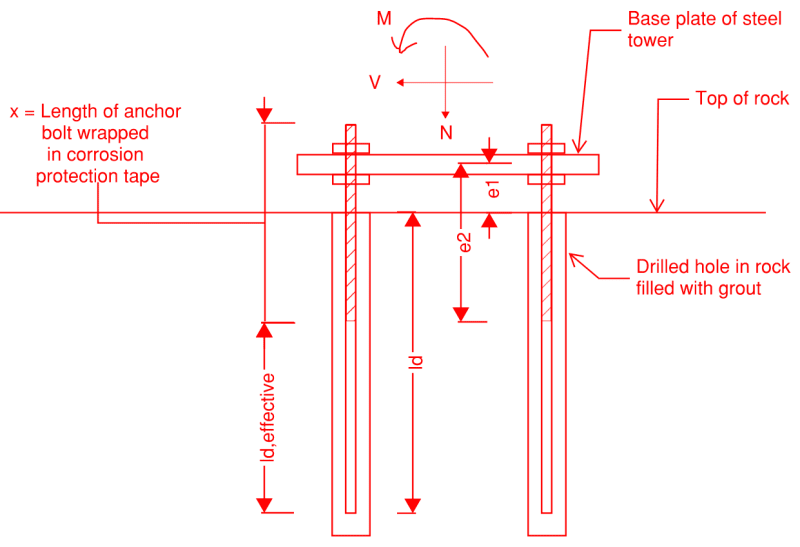
A related question is having to do with the check of bending in the exposed portion of anchor bolt. Intuitively, it seems the moment can just be V*e1, since below e1 the compressive strength of the grout should prevent the bolt from deflecting at all. But then I looked at the situation as basically equivalent to the one sketched below, which I again have never really analyzed before, and now I'm a bit in doubt if I'm not missing some other aspect.
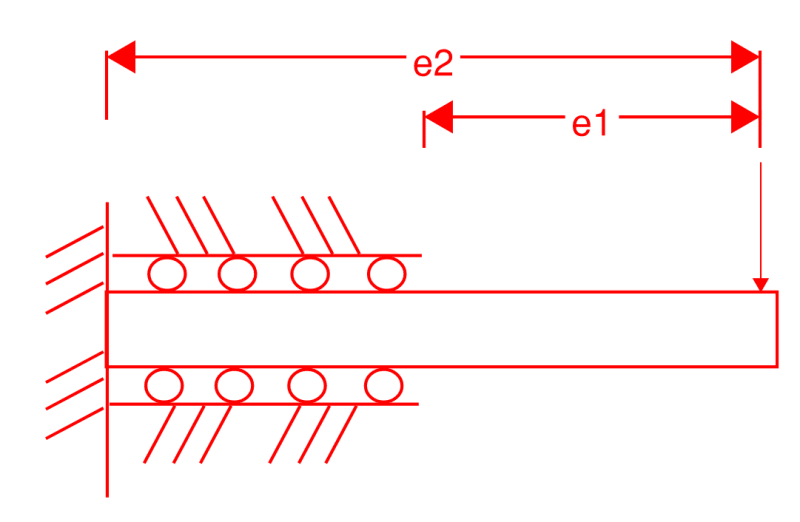
Would appreciate anyone's thoughts on this.
Therefore, I believe the length of the anchor bolt covered in this tape should be assumed to be completely debonded from grout. This means that for anchor bond strength, only the length ld,effective should be counted on.
Now my question is, what about for other checks such as pullout, breakout, or pryout? Intuitively, it seems those are all based on the depth of concrete (or in this case, grout and rock) above the bottom of your anchor, and there's no need to discount the debonded portion of the anchor. But I've never dealt with a case like this before, and would like to get a little confidence with some second opinions.

A related question is having to do with the check of bending in the exposed portion of anchor bolt. Intuitively, it seems the moment can just be V*e1, since below e1 the compressive strength of the grout should prevent the bolt from deflecting at all. But then I looked at the situation as basically equivalent to the one sketched below, which I again have never really analyzed before, and now I'm a bit in doubt if I'm not missing some other aspect.

Would appreciate anyone's thoughts on this.

